Baden Unveiled: Exploring Germany’s Sun-Kissed Wine Region.
The VDP.Weinbörse stands as the cornerstone event in the German wine industry, and this year marked the 50th anniversary of its organizer, the Verband Deutscher Prädikatsweingüter (VDP). Just ahead of this commemorative occasion, we received an invitation from the VDP for a press trip to Baden, one of its key regions.
Thanks to our proximity to Germany, we have made ongoing efforts to comprehend the collective VDP portfolio and terroir of their wines, introducing them to our readers through a number of reports like: VDP.WEINBÖRSE 2023, VDP goes Rotterdam 2023, Riesling Meets Pinot – VDP Tour 2024.
However, firsthand insights from winemakers at seven wineries across three sub-regions (Kaiserstuhl, Ortenau, Kraichgau), including sixty-three wine tastings, provided a wealth of enlightening experiences. We aim to share the compelling narratives from these prominent producers and VDP.Baden.
Baden: A Sun-Kissed Region in a Cool Climate Country
Unlike other German wine regions in the coldest Zone A, Baden is classified in the milder Zone B, like Champagne, Alsace, and the Loire Valley. As Germany’s warmest, sunniest, and driest wine region, Baden is ideal for Pinot varieties. Despite this, the average temperature is just 9°C, much lower than Burgundy. Even in late April, the chilly weather required us to wear jackets.

Baden is divided into multiple districts, spanning approximately 400 km from north to south, including the area around Lake Constance. Nestled alongside Alsace to the west, across the Rhine Valley, Baden is cradled by the Black Forest. These mountains create diverse orientations, invite cool winds from high altitudes, and form amphitheater-like terrains that trap both warm and cold winds, resulting in incredibly diverse microclimates.
Kaiserstuhl, influenced by warm winds from the Burgundian gate (Belfort Gap) between the Vosges and Jura mountains, is the warmest sub-region in Baden. In Ihringen, Kaiserstuhl, we were captivated by the stories from three producers; Joachim Heger from Weingut Dr. Heger, current chairman of the VDP.Baden, Maximilian Stigler from Weingut Stigler and Kolja Bitzenhofer from Staatsweingut Freiburg. They schooled us on Baden’s terroir, history, and the meticulous care in both vineyards and vinification.

Our tastings were fascinating, starting with Sekt, Pinot Blanc, Pinot Gris, Chardonnay, and concluding with multiple vintages of their cornerstone wine, Pinot Noir. Notably, the 2018 vintage, known for its warm and challenging conditions, exhibited vibrant acidity and olfactory intensity despite the cool climate.
To understand Baden, one must appreciate the interplay of cool microclimates within a warm growing region in a generally cool country.

Baden: A Geological Museum
Similar to neighboring Alsace, Baden’s soil showcases incredible diversity, resembling a geological museum. Layers of sediment from when the area was underwater reveal distinct strata at various depths and exposures. Volcanic eruptions in the Kaiserstuhl area further complicate the geological structure. Simplified, Kaiserstuhl is known for its volcanic soil, Ortenau for its granite and gneiss, and Kraichgau for its limestone. Each soil type exhibits unique characteristics due to the mixing of elements, resulting in distinct terroirs.
In Kraichgau, we explored the limestone soils with Claus Burmeister, the winemaker of Weingut Heitlinger and Weingut Burg Ravensburg. The estates’ commitment to terroir is extraordinary. Starting from 22 hectares, both wineries continue to study the soil, and now have purchased or rented more than 50 hectares of optimal land, continuing to replant more than 30 hectares. These wineries adhere to the philosophy of “one vineyard, one variety” to best express each terroir. For example, the red iron-rich limestone marl of the KÖNIGSBECHER vineyard is used for Pinot Noir, while the white limestone marl soil of HEINBERG is reserved for Chardonnay.
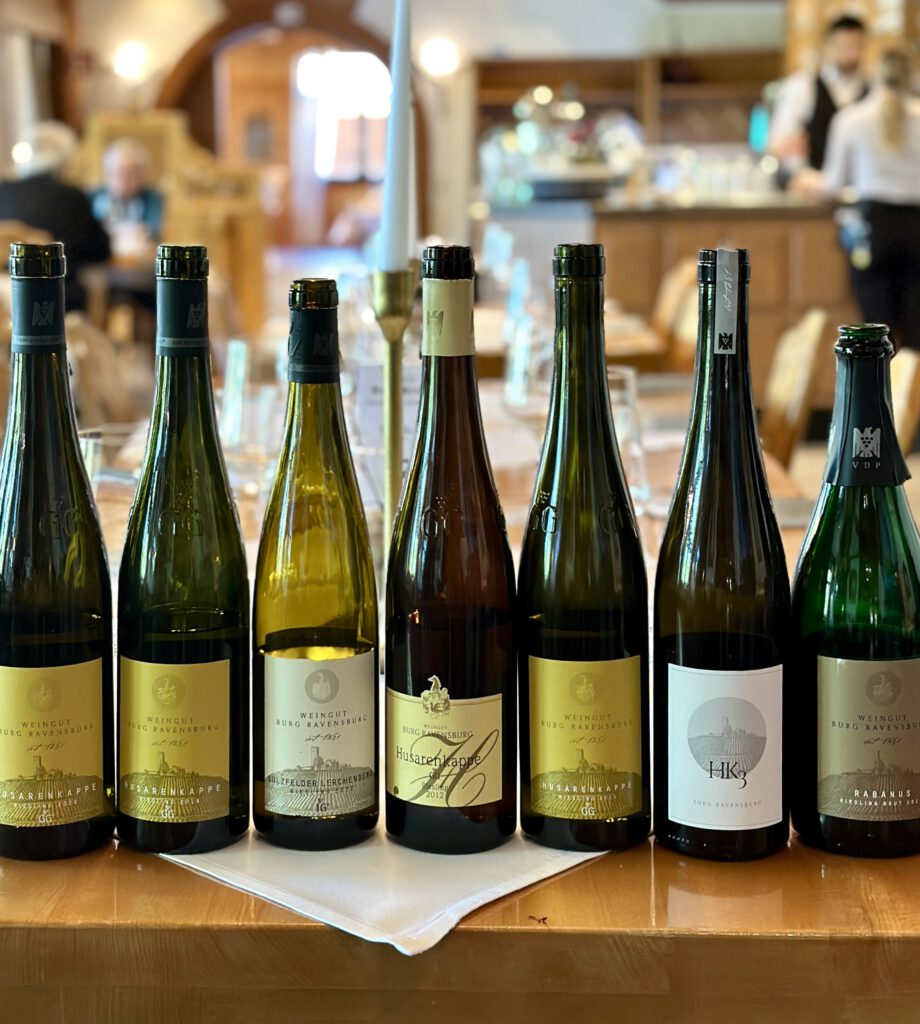
While minerals themselves do not have aromas, or flavors, that you can taste directly in your glass, they have a significant indirect impact. Dark volcanic soil, for instance, can collect heat during the day and release it at night, promoting extra ripening. In contrast, cool limestone, which retains moisture, helps maintain the soil temperature low, leading to elegance without having overripe flavors. On the very old gypsum limestone rock, the vine roots must dig deep to find water, contributing to its complexity.

Their Blaufränkisch from the DICKER FRANZ vineyard, grown on gypsum limestone, and retains an incredibly refreshing character for a fuller-bodied wine, exuding elegance and precision. The 2018 vintage showcased dense, dark berry fruits with a hint of spice, structured by velvety tannins and refreshing acidity. By the 2011 vintage, we witnessed the wine’s evolution, with finely integrated tannins that offer a smooth mouthfeel and maintained tension, which reminded us of the energy of the terroir over time. Soil is scientific, but at the same time romantic.

Baden: Diversity of Grape Varieties
The diversity of Baden’s terroir results in a rich variety of grape types. Spätburgunder (Pinot Noir) is the region’s most important variety (we will be writing more about Pinot Noir in a later article), but other members of the Pinot family, such as Weißburgunder (Pinot Blanc), Grauburgunder (Pinot Gris) and Schwarzriesling (Pinot Meunier), along with regional grapes like Blaufränkisch and Auxerrois, also have a long history here. Riesling, the fourth most-produced grape, thrives in cooler soils and microclimates.
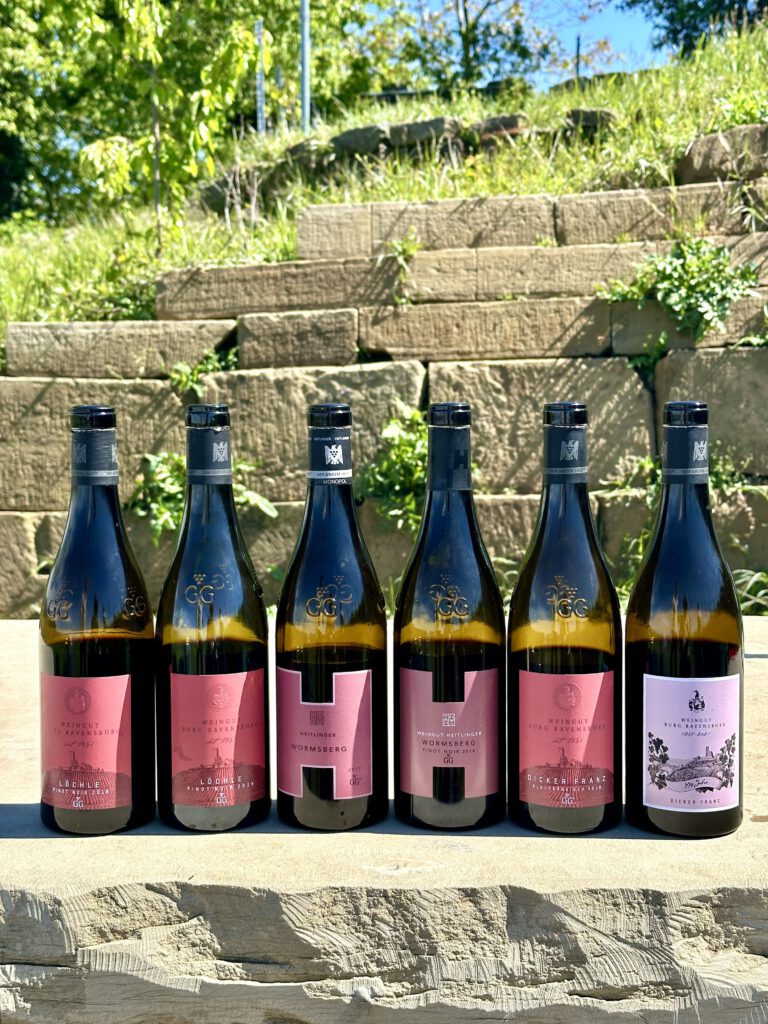
What caught our attention during this trip was the exceptional quality of white grapes in addition to Pinot Noir, challenging the notion that Baden, with its warmer climate, is ideal for black grapes. The 2014 HUSARENKAPPE GG Riesling from Weingut Burg Ravensburg achieves an impressively precise balance, showcasing vibrant acidity and intense aromas with notable depth, including a hint of noble rot.
The 2020 PAGODE Ihringen Chardonnay GG Monopol from Weingut Stigler, crafted predominantly with new barrique, offers a textured, harmonious profile and a persistent finish, along with clear aromas of yellow fruits.
The 2018 BLANC DE BLANC Extra Brut – méthode traditionnelle – VDP.SEKT.PRESTIGE®, from Weingut Stigler featured notes of apple pie and brioche, with a very fine, creamy mousse in its long-lasting finish after 41 months on yeast. Its elegant acidity and harmonious mouthfeel truly rival Champagne quality.
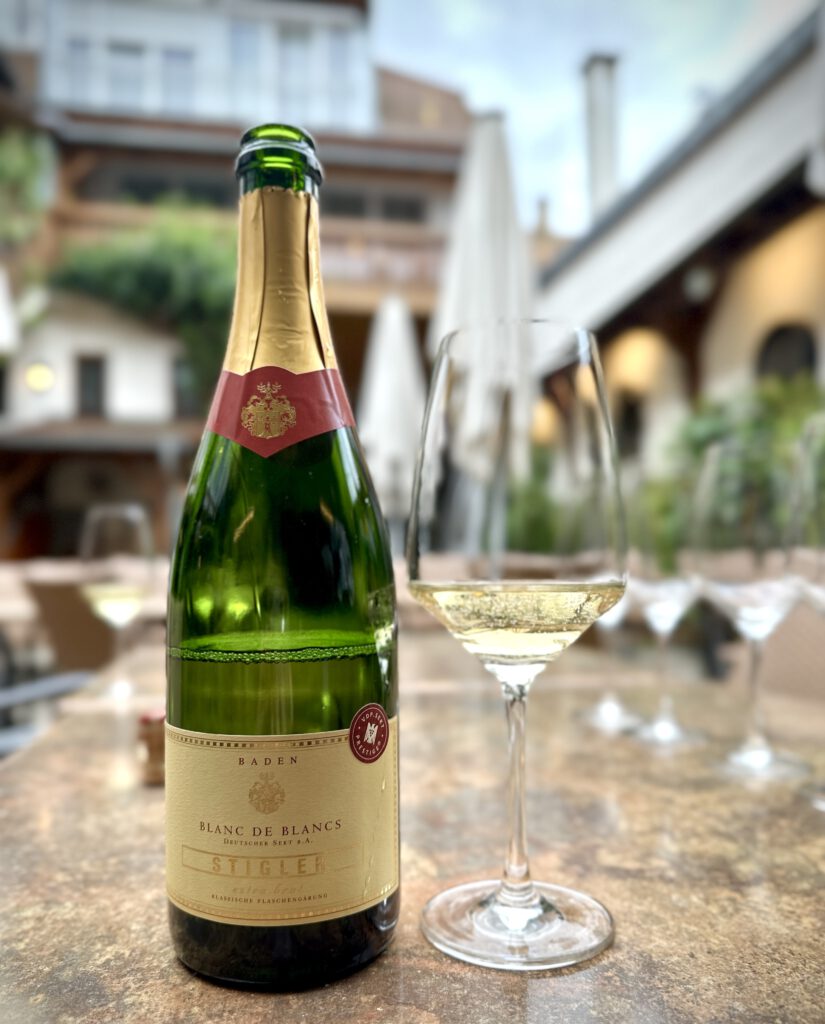
The VDP.SEKT.STATUT, established in 2018, is worth noting. To meet high-quality standards for two layers (VDP.SEKT, VDP.SEKT.PRESTIGE®), the guidelines cover vineyard sourcing, hand-picking, traditional winemaking methods, and aging requirements. On top of this a tasting panel regularly reviews the quality. The introduction of this classification reflects the dramatically improved quality of VDP.SEKT, partly driven by shared knowledge and insights within the VDP.
Baden: Combining Tradition and Innovation
One of Baden’s key features is its blend of tradition and innovation. Global warming has shortened the harvest period from October to August, and unexpected warm winters lead to early budding, increasing the risk of spring frost. Every vintage has become unpredictable due to climate change. But instead of complaining, Baden producers work dedicatedly with nature.
Weingut Heitlinger and Weingut Burg Ravensburg are among the largest organic and biodynamic-certified wine estates in Germany. Their aim is to restore what humanity has taken away over the years, until the natural ecosystem regains its self-sufficiency. The workload is immense. Every year, they replenish ten tons of biodynamic compost, with further meticulous care to revive the life of micro-organisms, but their dedication and commitment are evident in the results. Through this transition, grapes reach phenolic ripeness earlier, enabling earlier harvesting with lower alcohol levels. Cover crops help lower soil temperature from 40°C to 25°C, while changes in pruning methods have reduced trunk disease. There is no single recipe; all options are considered in balance in vineyards.
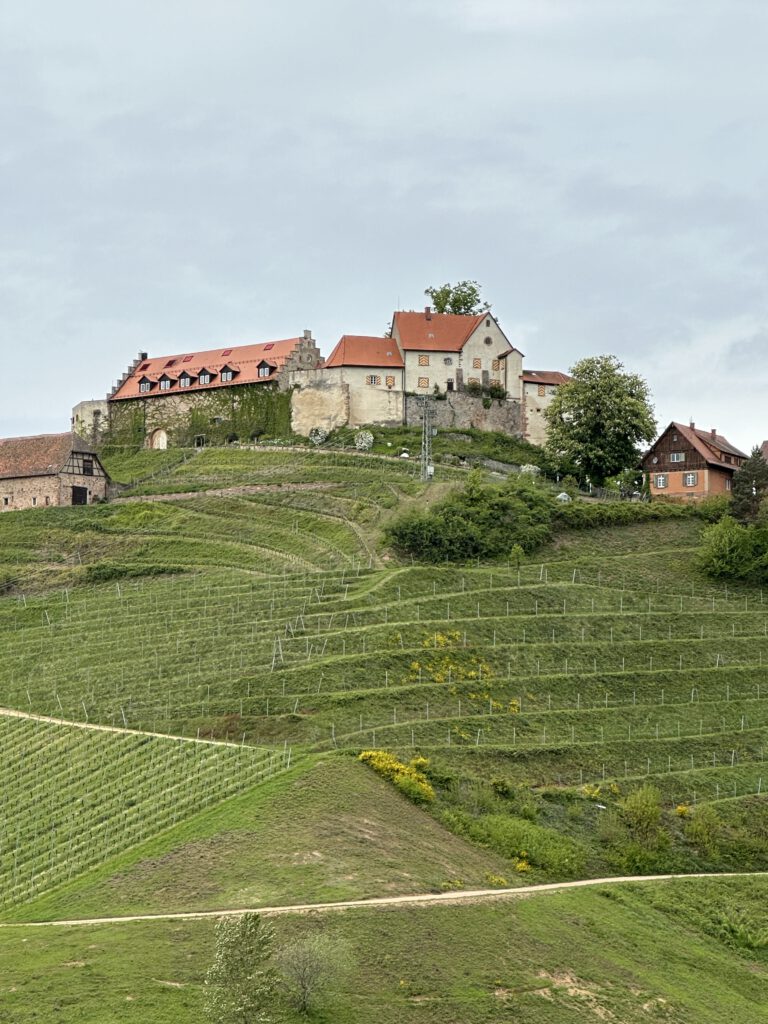
Regardless of certification, other producers also try to improve the fragile ecosystem of the vineyards. Weingut Dr. Heger has farmed all the vineyards without herbicides or pesticides, and ploughs a part of the vineyards using horses. Markgraf von Baden has highlighted that switching to PIWI varieties, which are highly resistant to fungal diseases, has significantly reduced pesticide use to one-tenth of previous levels. As part of the State Viticultural Institute, Staatsweingut Freiburg focuses on research and development, not only on PIWI varieties but also on technology such as solar panel usage for natural energy. Additionally Weingut Heitlinger and Burg Ravensburg have incorporated drones into their operations on a large scale.
Baden continues to balance tradition and innovation, ensuring that its wine production adapts sustainably to the challenges of climate change.
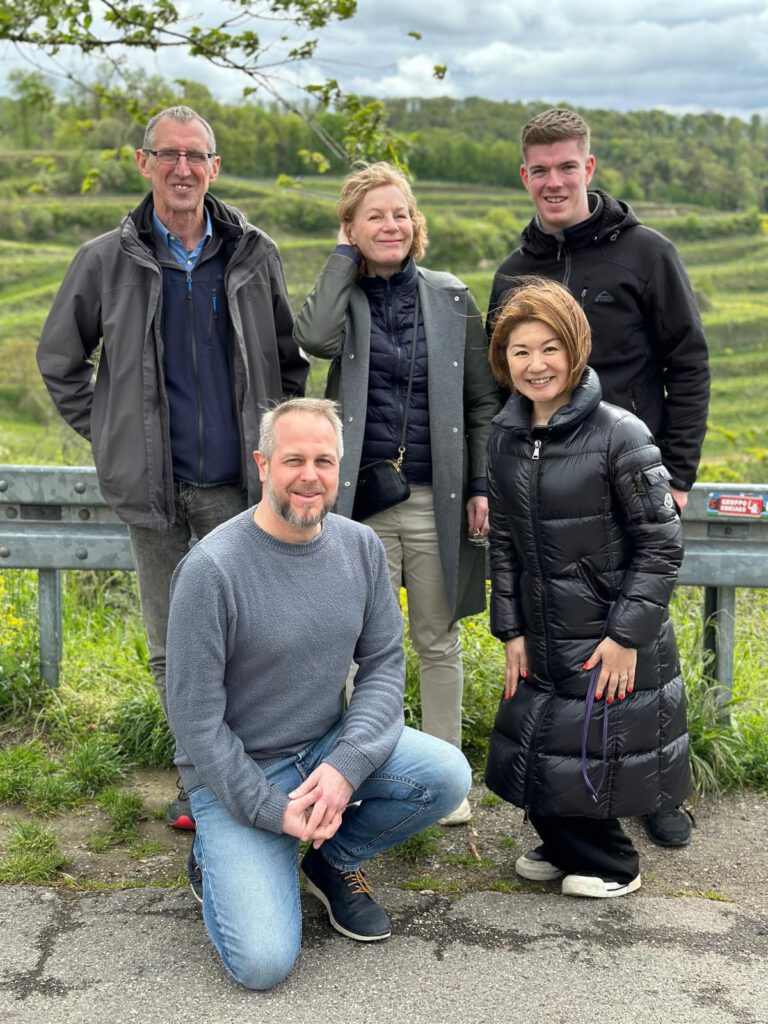
Embracing Baden’s Future: Innovation, Collaboration, and the New Generation of Winemakers
Through this trip, we delved deeply into Baden’s diversity in terms of climate, soil, innovation, and ecosystem-friendly practices.
Currently, a new generation has emerged in many wineries: Maximilian at Weingut Stigler, Rebecca and Katharina, daughters of Weingut Dr. Heger, and Patrick Jacklin at Weingut Heitlinger, are all actively involved in their family businesses, contributing to both winemaking and marketing. Each individual is crucial in maintaining and enhancing wine quality and bringing fresh promotional styles.

Furthermore, the VDP has also transformed itself, including its implementation of VDP.SEKT.STATUT and the ongoing VDP reclassification. Under these circumstances, sharing insights and collaborating within the region will be crucial to compete in the global wine market. In this aspect it is important to acknowledge the role of VDP.Baden, and their work behind the scenes. Its understanding of terroir and the energetic support to 19 producers, while coordinating with the larger VDP organization, have significantly contributed to the increasingly positive results.
This article is written by our own Kazumi Uejo. We extend our heartfelt gratitude to VDP.Baden, particularly Timo Renner, for their invaluable contributions and meticulous arrangements. We also thank Hilke Dahlem, Co-Managing Director of the VDP, for the invitation, and all the producers (Weingut Dr. Heger, Weingut Stigler, Staatsweingut Freiburg, Markgraf von Baden, Weingut Heitlinger, and Weingut Burg Ravensburg) for their enlightening learning experiences and warm hospitality.

